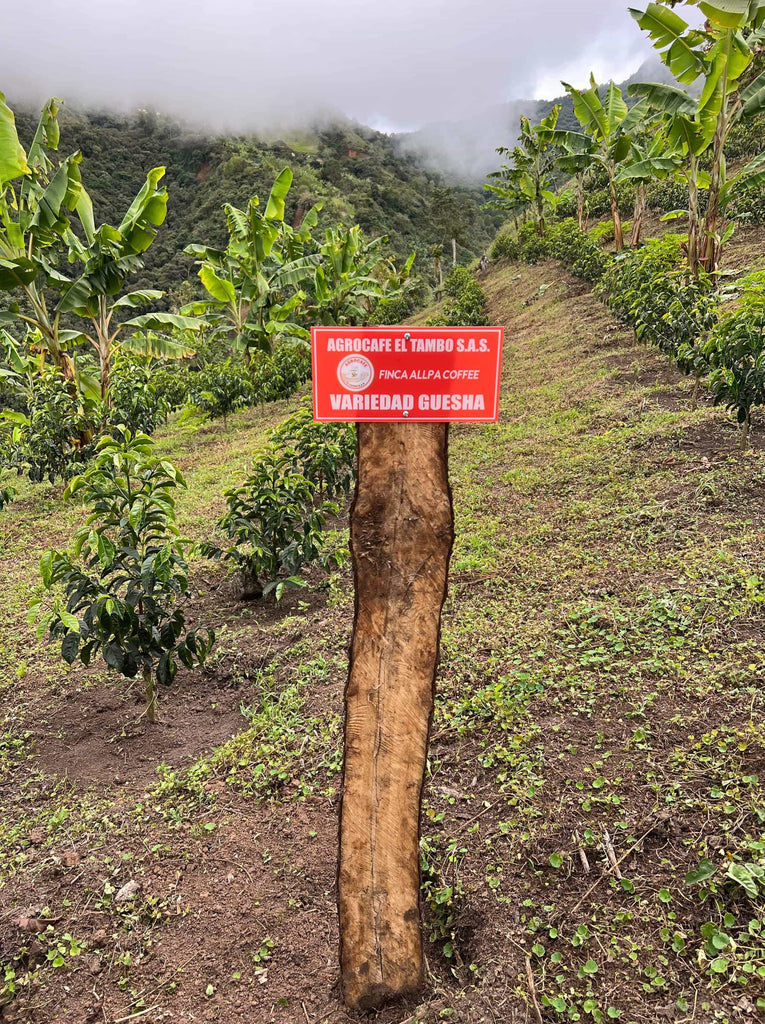Many different variables contribute to quality: soil's health, the farm's altitude, the amount of rainfall, and processing all have an impact. Another major contributor that you may not have heard of is the plant variety.
What Is A Coffee Variety?
To understand what makes a variety, let's compare coffee to another fruit—apples, species Malus domestica. Look at apple labels in the grocery store and you will see Gala, Granny Smith, Fuji, and Red Delicious, to name a few. Those are the names of different varieties. Each of those apples has a common “appleness” about them, but their colors, shapes, textures, and flavors are different. It is the difference in variety that produces these different experiences.

What Variety Is My Coffee?
The genus of coffee is Coffea, and under that, there are at least 129 species. These include the two most commonly grown species: coffea arabica and coffea canephora—commonly known as robusta. Counter Culture only buys coffea arabica. Why? Arabica makes up approximately 70% of the world's coffee production. Robusta is more bitter because of its higher caffeine content and is less complex in its acidity. Overall, the people who enjoy our coffee are fans of arabica coffee.
To say that Counter Culture Coffee simply buys arabica coffee is not specific enough. It would be similar to us saying we buy apples, but not distinguishing between the many types out there. So, we have to get more specific.

We buy dozens of different coffee varieties from around the world. Coffee is purchased as a "lot." A lot of green coffee is anything that can be separated as unique from other coffee, but has little to do with size. Oftentimes, we’re buying a lot that is a mix of varieties. Sometimes, the lot is just one variety.
Regardless, these different varieties contribute to the important distinctions in flavor notes for each offering. Like apples, different coffee varieties come in different shapes and sizes, and when brewed, they have noticeably different flavors and textures.
You can find variety information about our coffees under the “Harvest” tab on our single-origin coffee product pages.

When we sell a coffee with a single variety, like a Gesha or a Maragogipe-variety lot, you will see it called out on the label. Our Single-Origin Coffee Subscription is the best way to try the most coffee varieties. Coffees change every other week so you'll always have something new!
How Many Varieties Of Coffee Exist?

The precise number of different varieties that exist in the world is unknown. Ethiopia alone has more than 10,000 identified and distinguishable varieties collected and growing. One of the many ways we work to improve our coffee offerings is to experiment with different varieties in places they aren’t typically found and taste testing them with our producing partners.
Variety innovation can also financially benefit a producer. Different varieties may provide greater cherry production, improved disease resistance, or easier maintenance compared to legacy crops. Organizations like World Coffee Research are leading a global push to better understand the desirable attributes of different coffee varieties.
Popular Coffee Varieties

Here are a few important varieties to be aware of, either because they are very common or because they are highly valued by coffee roasters and drinkers. You can find all of these varieties in Counter Culture Coffee offerings throughout the year:
Typica
Typica is one of two parent varieties of coffee cultivars and has been selectively bred for more than 500 years. Typica has mutated and been cross-bred across the world It’s still widely planted in Peru, Mexico, Indonesia, and Jamaica, to name a few countries.
The Typica variety is sweet, mild, and approachable. Notes of chocolate and nut take center stage, complemented by hints of spice. Typica’s acidity is mild and balanced, conjuring dried fruit and dark stone fruit, such as black cherry and plum.
Bourbon
Named for an island off the coast of Madagascar, Bourbon is one of the world's most culturally and genetically important arabica varieties. Bourbon is a parent of numerous other coffee varieties.
Bourbon delivers brown sugar-like sweetness, fruit notes like cherry and peach, and a round body.
Caturra
Caturra is a genetic mutation of Bourbon, first identified outside of a village called Caturra in Brazil. This variety was selected and cultivated for its smaller plant size and higher level of production compared to Bourbon.
Caturra tastes similar to Bourbon, but is somewhat brighter.
Gesha
Gesha is an Ethiopian variety, selected from the Gori Gesha forest in the southwestern part of the country. The variety was originally collected from coffee forests in Ethiopia in the 1930s and then distributed to Panama in the 1960s. Gesha coffees are very highly valued because of their rarity, production costs, and flavor.
This coffee is light, bright, and floral, with tea-like characteristics not usually found in coffee.
Catuai
Catuai is a cross between highly productive Mundo Novo and compact Caturra, bred by the Instituto Agronomico (IAC) of Sao Paulo State in Campinas, Brazil. This variety is prominent throughout Central America—for example, Catuai is the most common variety grown in Honduras.
This coffee pairs perfectly with pie! Brown sugar sweetness combines with notes of pastry and mild, cooked fruit. Nutty flavors like pecan and almond are also common.
SL28
SL28 is among the most well-known and well-regarded varieties of Africa. First identified in Kenya, there are many SL28 trees in the country that are 60–80 years old and still productive.
Known for grapefruit-like brightness, savory flavor similar to sundried tomato with a syrupy body.
While variety may not tell you everything, it has a significant impact on coffee flavor and it might be something that can help you find your next favorite!







